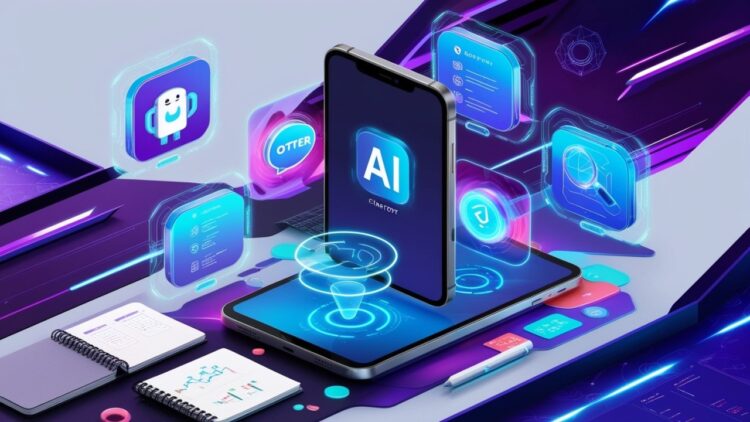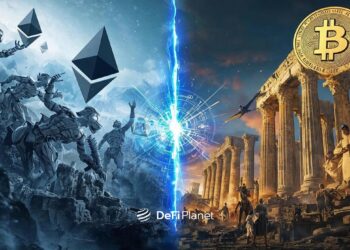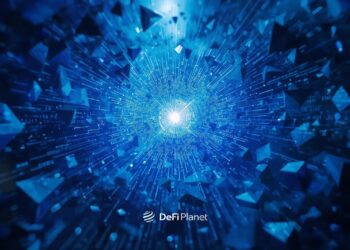AI-powered decentralized applications (AI DApps) are the latest frontier in the evolution of web3 innovation. They combine the decentralized architecture of blockchain with artificial intelligence capabilities, such as machine learning, predictive analytics, and natural language processing (NLP). The result is a new class of DApps that can automate decisions, personalize user experiences, and analyze data in real-time, without relying on centralized control.
In recent months, the development and usage of AI DApps have surged, now making up 16% of total DApp activity, up from 11% in February 2025. This growth, highlighted by a 26% increase in user activity (from 2.6 million to 3.8 million daily unique active wallets), signals a potential reshuffle in the DApp space, challenging the dominance of DeFi and Gaming.
AI projects like Fetch.ai, SingularityNET, and Gensyn have drawn significant attention, while platforms such as Bittensor and Autonolas are pushing the boundaries of on-chain AI networks. In April, AI DApps like LOL, Dmail Network, and World.fun gained traction, showcasing AI’s growing role in web3 innovation.
With DeFi’s total value locked dropping by 27% in Q1 2025, AI-powered DApps surge has led many to question: Are we witnessing a genuine breakthrough that could redefine how we interact with decentralized systems or is this simply another tech hype cycle dressed in Web3 fashion?
Why AI-Powered DApps Are Gaining Popularity
The surge in AI-powered DApps is a notable trend in web3 innovation, driven by several key factors:
Post-ChatGPT Boom in AI Interest and Spillover into Blockchain
The widespread adoption of AI technologies, particularly following the release of models like ChatGPT, has sparked interest in integrating AI capabilities into various sectors, including blockchain. This enthusiasm has led to a growing number of AI-powered DApps, which leverage decentralized networks to offer AI services such as predictive analytics, natural language processing, and machine learning.
Appeal of Combining AI Automation with Decentralization
Integrating AI with decentralized applications offers the advantage of automation and intelligent decision-making without relying on centralized entities. This combination enhances the functionality of DApps, enabling them to provide more personalized and efficient services while maintaining the core principles of decentralization and user control.
Growing Investor Interest and VC Funding in the AI x Web3 Niche
The intersection of AI and web3 innovation has attracted significant venture capital investment. For instance, startups like Sahara AI have raised substantial funds to develop decentralized AI platforms, indicating strong investor confidence in this niche.
These developments suggest that AI-powered DApps are not just a passing trend but a transformative force in the Web3 space, offering innovative solutions that blend the intelligence of AI with the autonomy of decentralization.
Real Innovation or Market FOMO?
AI integration is driving genuine innovation, enhancing the intelligence of autonomous agents and smart contracts. Projects like Fetch.ai and Ocean Protocol are developing decentralized networks where agents can make real-time decisions, optimising processes such as supply chain management and data sharing. These advancements go beyond static, rule-based systems by introducing dynamic, AI-driven functionalities.
AI is also helping create more intuitive interfaces for DApps. With natural language processing (NLP), users can interact with DApps using conversational commands, making blockchain interactions more intuitive and straightforward. This approach lowers the entry barrier for non-technical users, helping to broaden the adoption of decentralized technologies.
In addition, AI is being leveraged to improve security and governance within decentralized systems. Machine learning algorithms are used to detect fraudulent activities, verify identities, and streamline governance processes in Decentralized Autonomous Organizations (DAOs). They highlight the benefits of combining AI with blockchain.
However, despite the promising innovation, there are also signs of hype.
Some projects are capitalising on the AI trend without delivering substantial technological advancements. For example, platforms like AI Trading Bots or AI Art Generators often rely on buzzwords like “AI-powered” or “machine learning,” but fail to provide clear, functional applications. These projects usually lack solid use cases or real AI integration, resulting in limited real-world value.
The rise of AI-related tokens, such as AI Coin or TokenX, has also led to speculative investments, with some seeing significant price increases based purely on hype. These tokens often gain attention through heavy marketing and exaggerated claims, rather than through actual technological innovation.
This mirrors previous cycles in the cryptocurrency market, where projects like BitConnect or ICO tokens surged in popularity but ultimately failed to deliver real value or technological breakthroughs.
Comparing AI DApps to Gaming and DeFi
AI DApps, Gaming DApps, and DeFi platforms each appeal to users in different ways. Here’s a look at the key adoption drivers for each.
Comparison of AI DApps to Gaming and DeFi
| Category | Gaming DApps | DeFi DApps | AI DApps |
| Key Adoption Drivers | Driven by entertainment and play-to-earn models. Users earn in-game rewards (NFTs, tokens), combining leisure and income. | Users are drawn to decentralized financial services like lending, staking, and yield farming for financial autonomy. | Attracts users aiming to solve real-world problems with intelligent, autonomous systems, improving efficiency. |
| Long-Term Value vs. Short-Term Engagement | Engagement spikes from new releases or events, but long-term value is inconsistent. Retention depends on updates. | Long-term value from decentralized financial services, though short-term spikes can happen during market booms. | Strong long-term potential by solving complex problems, but may see short-term engagement spikes due to hype. |
Challenges Holding AI DApps Back
While AI-powered DApps hold transformative potential, several challenges impede their seamless integration into the blockchain ecosystem.
Challenges Holding AI DApps Back
1. Technical Limitations: On-Chain Compute Power and Model Performance
AI models, especially deep learning algorithms, require substantial computational resources for both training and inference. Blockchain networks, by design, prioritise decentralization and security, often at the expense of processing speed and scalability.
This mismatch leads to performance bottlenecks, as executing complex AI models directly on-chain can be inefficient and costly. While solutions like off-chain computation and layer-2 protocols are being explored, they introduce additional complexities in terms of data synchronization and integrity.
2. Privacy Concerns Around AI Training Data
AI systems necessitate access to large datasets for training purposes. However, blockchain’s transparent nature poses a challenge to data privacy, as transactions and data entries are publicly accessible. This transparency can conflict with privacy regulations such as GDPR, especially when sensitive information is involved.
While techniques like federated learning and homomorphic encryption offer potential solutions, they are still in developmental stages and may not fully address all privacy concerns.
3. Governance and Transparency of AI Decision-Making in Decentralized Systems
Incorporating AI into decentralized governance structures, such as DAOs, introduces complexities related to decision-making transparency. AI algorithms often operate as “black boxes,” making it challenging for stakeholders to understand and trust the rationale behind decisions.
This opacity can undermine the principles of accountability and fairness that are foundational to decentralized systems. Moreover, if AI systems are compromised, they could manipulate governance outcomes without being detected immediately.
4. Difficulty Integrating AI with Blockchain’s Deterministic Nature
Blockchain networks rely on deterministic processes to ensure consensus across distributed nodes. However, AI models, particularly those based on probabilistic reasoning, can produce non-deterministic outputs.
This unpredictability poses a challenge to the integration of AI into blockchain systems, as it can lead to inconsistencies and conflicts within the network. Reconciling these differences requires innovative approaches to ensure that AI-driven decisions align with the deterministic nature of blockchain protocols.
What Needs to Happen Next
To realise the full potential of AI-powered DApps, several developments are necessary:
Decentralized Compute Infrastructure
The current lack of scalable, decentralized computing resources hinders the efficient deployment of AI models on blockchain networks. Projects like Bittensor and Gensyn are addressing this gap by creating decentralized machine learning networks that allow developers to train and deploy AI models across distributed nodes.
These platforms utilise blockchain technology for task validation and token-based payments, promoting a more equitable distribution of computational resources.
Enhanced User Interfaces (UI/UX)
For mainstream adoption of AI DApps, user interfaces must be intuitive and accessible to individuals without technical expertise. This includes simplifying complex blockchain interactions and integrating AI functionalities in a manner that is user-friendly. Efforts are underway to design interfaces that cater to a broader audience, ensuring that the benefits of AI DApps are accessible to all users.
Regulatory Clarity on AI Usage and Data Protection
The intersection of AI and blockchain presents unique challenges in terms of data privacy and compliance with regulations such as the General Data Protection Regulation (GDPR).
There is a pressing need for clear regulatory frameworks that address the use of AI in decentralized environments, ensuring that user data is protected and that AI systems operate transparently and ethically. Recent discussions highlight the importance of establishing such frameworks to foster trust and innovation in the AI DApp space.
Open-Source AI Models Governed by DAOs
The development of open-source AI models, governed by DAOs, can promote transparency, fairness, and community-driven innovation. DAOs can establish and enforce guidelines for ethical AI development, from data privacy to algorithmic fairness, ensuring that these models align with the values of the communities they serve. This approach fosters a collaborative environment where the benefits of AI are distributed equitably among users.
Is This Trend or a Transformation?
AI-powered DApps are gaining attention due to the recent surge in AI technologies, offering potential to merge automation with the security of blockchain. While the excitement is real, AI DApps must prove their lasting value by enhancing decentralization with practical solutions such as improved decision-making and increased privacy.
For AI DApps to succeed, they must offer meaningful innovation that solves real-world problems, such as optimising smart contracts or improving governance. If they fail to go beyond the hype, they risk becoming just another passing trend. Their true potential will be realised if they can create tangible advancements in web3 innovation and demonstrate lasting value.
Disclaimer: This article is intended solely for informational purposes and should not be considered trading or investment advice. Nothing herein should be construed as financial, legal, or tax advice. Trading or investing in cryptocurrencies carries a considerable risk of financial loss. Always conduct due diligence.
If you would like to read more articles like this, visit DeFi Planet and follow us on Twitter, LinkedIn, Facebook, Instagram, and CoinMarketCap Community.
Take control of your crypto portfolio with MARKETS PRO, DeFi Planet’s suite of analytics tools.”





















